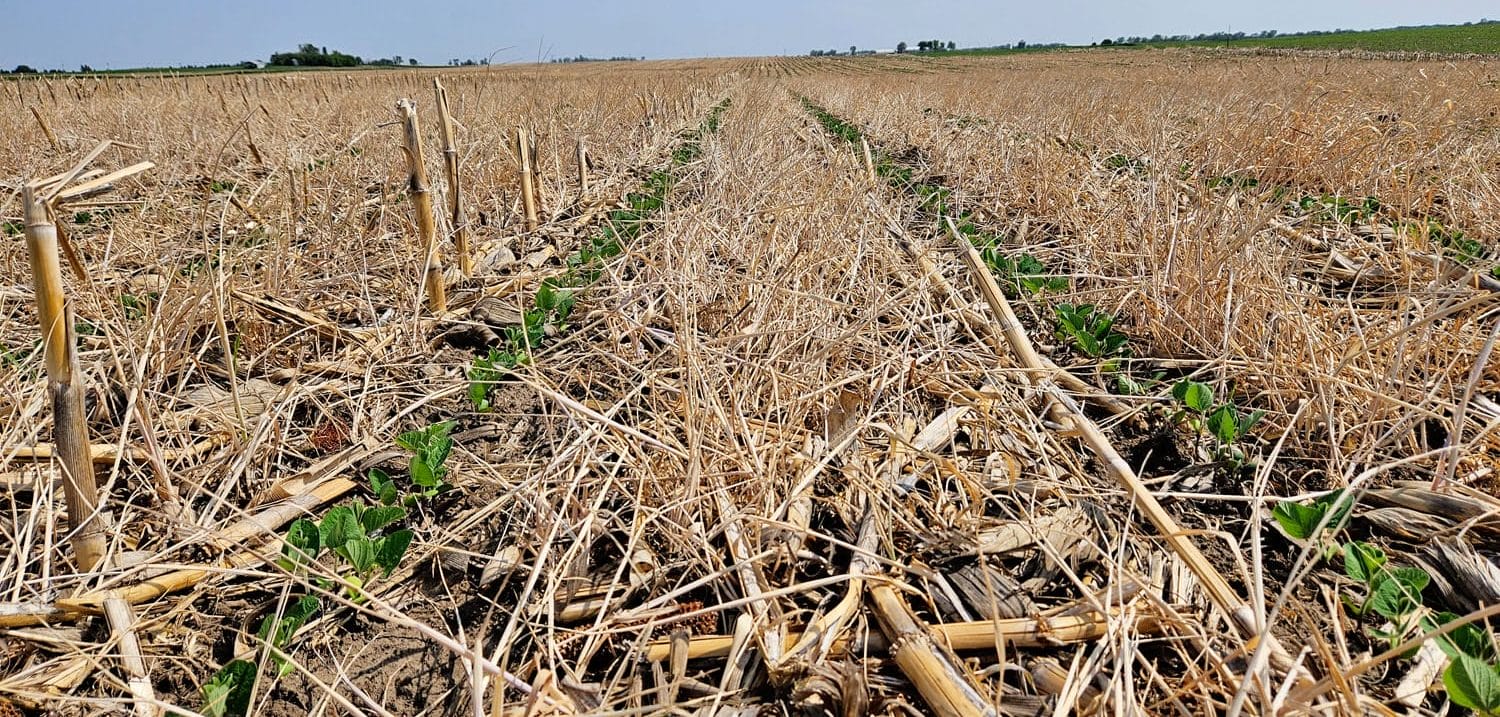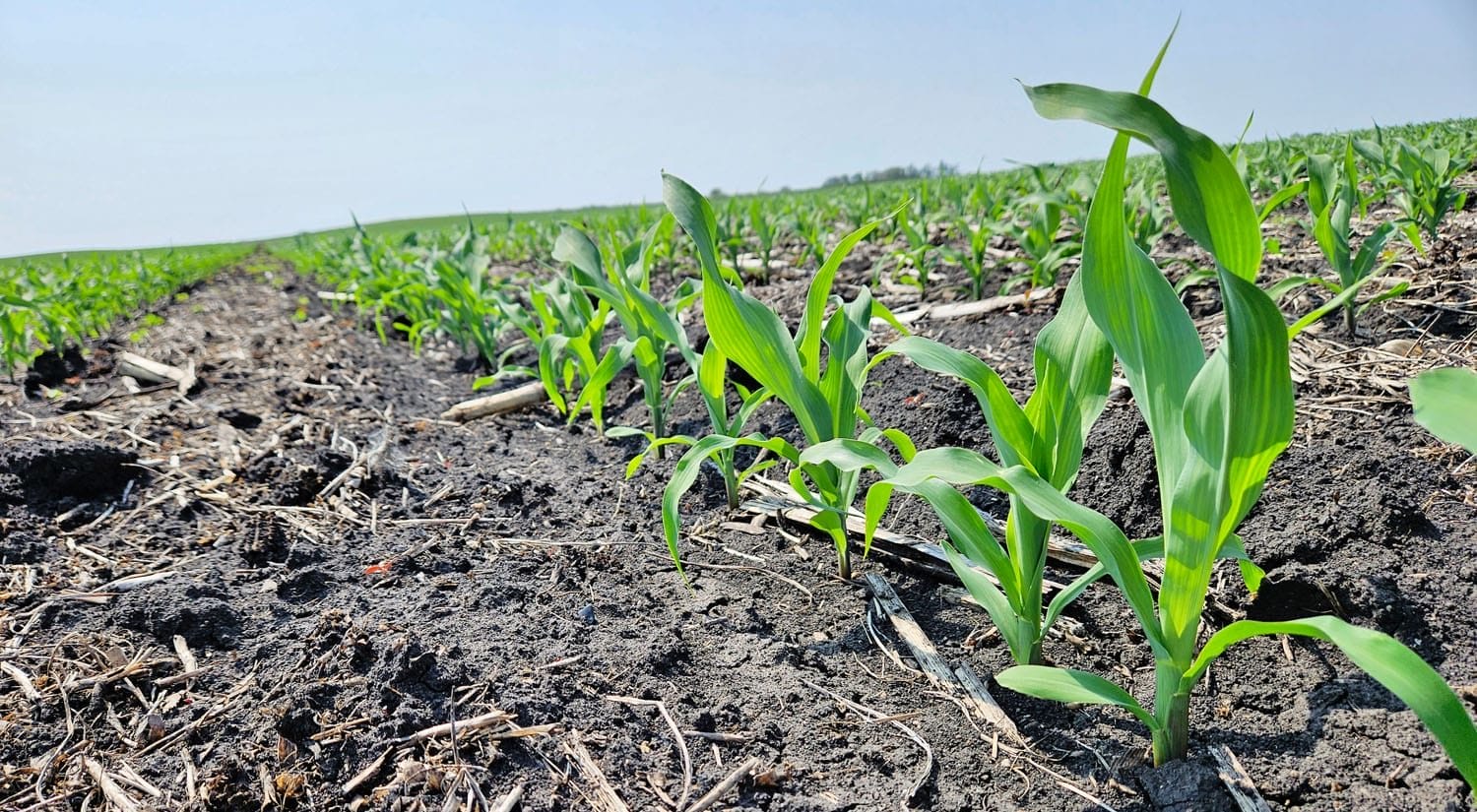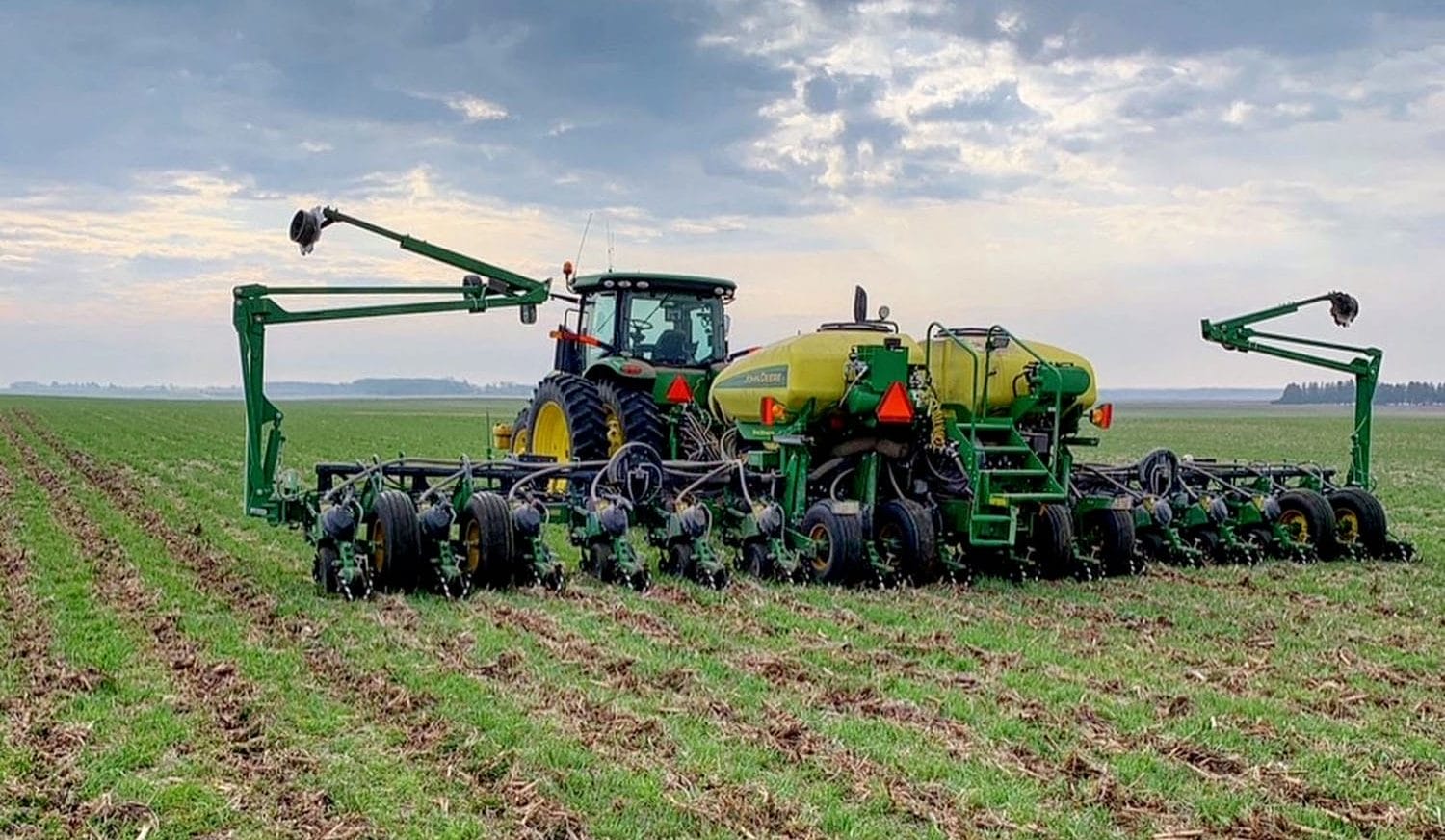Putting Soil to the Test
Many PFI farmers have noted that cover crops boost their field access. A new PFI on-farm trial aims to back those claims with data.
It’s an unseasonably warm, grey December day. Dozens of horticulture, livestock and field crop farmers, many finally done with their fall harvest, gather in Ames, Iowa, for PFI’s Cooperators’ Meeting. They’re here to connect as a community of on-farm researchers.
Over two days, the farmers, often referred to as “cooperators,” will present results from their 2023 on-farm research trials, share stories, ask big questions about their farms and brainstorm ideas for how to answer those questions in the coming year.
For these farmers, this annual gathering is the capstone to a year of farmer-led curiosity. Since the founding of PFI’s Cooperators’ Program in 1987, it’s also been a defining event for PFI’s farmer-led on-farm research program.
The first bustling day nears its end after hours of presentations, swapping of ideas and hearty mealtime conversation. Delivering the keynote address that evening, Sam Bennett, a field crop farmer from Galva, Iowa, expresses a view shared by many PFI research cooperators.
“We’re all curious,” he says, “and most of us are okay doing things that aren’t normal.”
Growing cover crops is one way many PFI farmers are challenging prevailing agricultural norms. When grown between and alongside cash crops, cover crops can reduce erosion, hold moisture, add nutrients back to the soil and boost overall soil health.
Sam has been using cover crops for a decade, and he’s seen how they’ve helped with everything from weed control to water management in his fields.
He’s not alone. Many farmers have anecdotally shared how their cover cropped fields drain more quickly after big rain events, giving them earlier access for field work – and more access across a season.
To date, however, no formal study PFI is aware of has looked at this aspect of cover crops.
PFI, along with farmers like Sam, is changing this with a new multi-year on-farm research project that seeks to answer, “Do cover crops increase the number of days suitable for field work?”
Why It Matters
The idea for the study came from PFI’s senior research manager, Stefan Gailans. “I kept hearing cover crop farmers state how they were getting into their fields earlier in the spring than their neighbors,” he says.
He began to wonder if there was a way to back those stories up with data. PFI farmers were eager to do so. Cooperators have researched cover crops from a range of angles – from weed control, to yield impacts, to profit from grazing them – but measuring suitable field days is new.

A terminated cereal rye cover crop creates a mat to help suppress weeds and maintain soil integrity for Keaton’s soybean cash crop.
“The data PFI farmer researchers are generating right now is not enough to sufficiently move the needle on cover crop adoption,” Stefan says, referring to the glaring gap between Iowa’s current cover crop acreage and the amount needed to reach water quality goals laid out in the Iowa Nutrient Reduction Strategy.
In 2022, for instance, Iowa farmers planted about 3.3 million acres of cover crops – about a tenth of Iowa’s crop acres. It’s a big increase from a few years ago. But it’s still a long way from the 12.5 million acres recommended in the state’s strategy.
Stefan thinks the new PFI project will confirm what farmers are seeing – and he hopes it inspires more farmers to give cover crops a try.
To gather data, farmers will observe their cover-cropped fields throughout the year and complete a short survey on a weekly basis that asks if they could have done field activities that week without compromising field integrity, and on which days. They’ll also share several years of field history at the start of the project.
PFI agronomists will then compare farmers’ data to the U.S. Department of Agriculture’s weekly Crop Progress and Condition reports.
The study is designed to reflect farmers’ individual views of suitable fieldwork days. Each farmer will get to decide the question within their own farm context.
“Every farmer will look at it differently,” Sam says. “I’m hesitant to go out when it’s too wet because my family no-tills, so we won’t be able to fix the ruts. Farmers who are tilling can fix ruts more easily.”
Alec Amundson, who farms near Osage, Iowa, has participated in several on-farm trials with PFI over the past few years and also plans to take part.
“As a cover crop farmer,” Alec says, “when you get comfortable with your soil and what it contains, you’re going to have more confidence to get out in the field, even when the ground still has a lot of moisture.”
Getting Into the Fields
In deciding when fields are fit for work, temperature, wind and dryness (and the risk of field fires) must be considered. Alec recognizes that cover crops can only do so much in getting farmers out in the fields sooner.
“If I decide I can’t spray because of wind, cover crops don’t control the wind,” he says. Wetness, however, is often top of mind, especially in the spring. Cover crops can soak up and hold excess moisture that would otherwise linger as puddles and mud.
Heading into the 2024 growing season, though, drought is a concern for many. Keaton Krueger, who farms in central Iowa and has been cover cropping for four years, is one such person. He’s worried that cover crops could harm his cash crops in a sustained period of low rainfall by keeping the small amount of available moisture from reaching his corn or soybeans.

Keaton’s corn following a triticale and oat cover crop. The field was strip-tilled in the spring prior to corn planting.
He also had a patchy cover crop stand emerge last fall. As a result, he suspects his stand of covers this spring will be inconsistent, making field access hard to navigate on especially dry or wet days when some parts of the field might be suitable for work while others aren’t.
But he’s also mindful how cover crop benefits can accrue over time, potentially moderating the effects of both too much and too little rain. “I hear from long-time cover croppers that a healthy stand of green cover will absorb moisture in its growth, and that the rate of water infiltration improves after many years.”
If that’s true, a field that’s had cover crops for many years will hold onto soil moisture better even in a drought, thus reducing the chances of dry soil blowing away on windy days or during equipment passes.
Whether fields are too dry or too wet, Keaton sums up why it matters so much to have more days for field work. “I barely have enough days available in the spring as it is,” he says. “I can’t risk losing any of them.”
Every workable day counts, he says, especially in the spring when there tends to be both more rain and more moisture from winter snow. Alec finds that when he has just a few extra days, he can be more patient when deciding when to get into the field.
Sam agrees. “I do a better job if I have all week to get it done. I take my time to do it well.” And based on his own experiences, he’s pretty sure of what this new study will find: “Having cover crops definitely increases time in the field.”
Want to Take Part?
Enrollment is closed for 2024, but we’ll be seeking more farmers for the trial in 2025. Contact Stefan at stefan.gailans(at)practicalfarmers(dot)org or (515) 232-5661 for questions, or visit our Cooperators’ Program page to learn more about PFI on-farm research.

